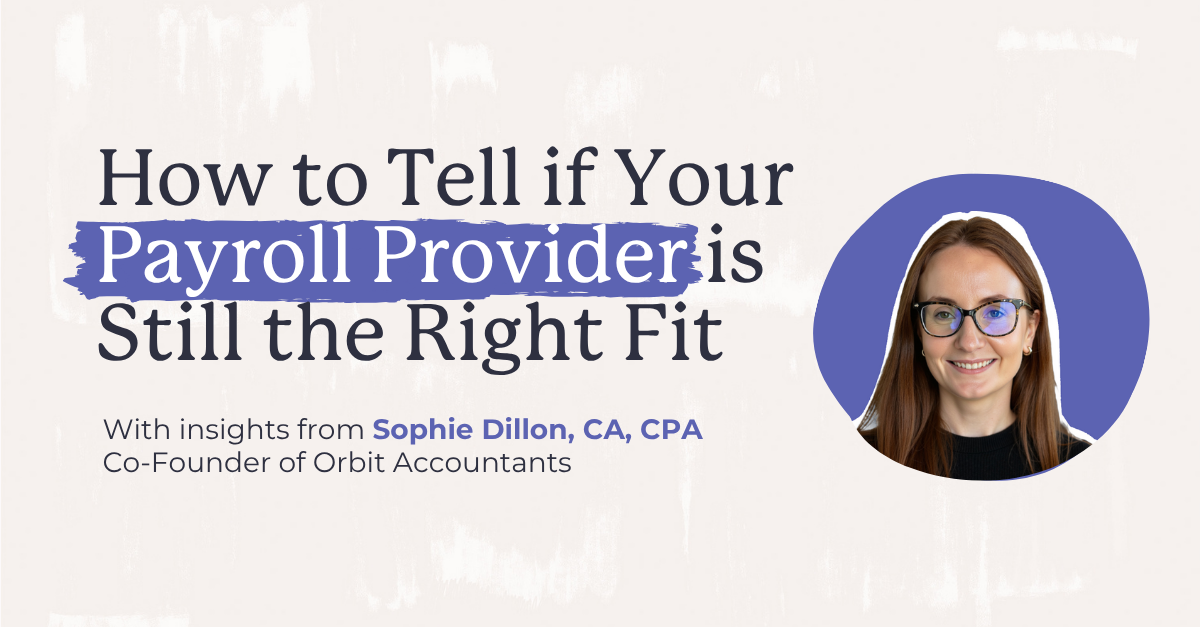Become an insider!
Get our latest payroll and small business articles sent straight to your inbox.
If you’re new to the world of payroll, you might have come across one of the common acronyms, YTD. This stands for year-to-date. You might now be wondering how it fits into the overall scheme of things. This is an important calculation in payroll management, so understanding how it works is essential for both your business and your employees.
In this article, we’ll be taking a look at the function of YTD in payroll, how it can be used to make more informed decisions for business growth and how to avoid common issues with your YTD numbers.
What is year-to-date in payroll?
Year-to-date refers to the period of time between the start of the current calendar year (January 1) and the current date. The complete YTD spans a calendar year.
For employees, YTD figures represent a running total of:
- The amount of money they have earned (gross pay) so far in the year.
- The total amount of tax withheld.
- The total amount of deductions or contributions they have made towards things like Canada Pension Plan (CPP) and Employment Insurance (EI) since the beginning of the calendar year.
These YTD figures help employees ensure they have received the correct annual pay and that their deductions are correct. Some employees review these figures regularly, while others might only check their YTD totals when they get their T4 slip to review it against their final pay stub.
For payroll and reconciling purposes, the YTD total is based on all money paid to an employee between January 1 and December 31 of the same year. Also, it’s dependent on this being paid within those dates, not earned within those dates. YTD doesn’t look at factors such as the pay cycle — or when the hours were worked.
This lets businesses compare their payroll expenses to their annual budget for employee costs, plus they can see the total budget that goes towards payroll compared with all their other expenses.
These YTD figures are used to calculate income, taxes and deductions accurately and to generate tax reports such as T4 Statements of Remuneration.
Why do year-to-date calculations matter?
YTD calculations provide a snapshot of financial health and performance across a specific period of time, so they’re important to your business for a number of reasons.
Fewer year-end payroll problems
Getting your payroll amounts correct all year means that your YTD numbers will be accurate. This means your T4s will also be correct, making your year-end preparations smoother and reducing the need for adjustments during tax time.
YTDs in payroll also help your employees keep track of what they’re getting paid. That further helps them decide on things like increases to Registered Retirement Savings Plan (RRSP) contributions or tax deductions.
Easier budgeting and forecasting
By comparing projected YTD numbers to actual payroll expenses, small business owners can pinpoint any potential problems or opportunities in their financial performance and make any necessary adjustments to their operations. This might include making critical choices about whether to hire or lay off employees.
As well as looking forward, YTDs also give business owners the chance to evaluate their performance over time.
By looking at current YTD figures and comparing them to previous years, businesses can see if there are any particular trends that could help them make more informed decisions about the direction of their business.
Smoother tax preparation
For tax purposes, YTDs encompass all the payroll transactions that have occurred during the calendar year.
This means businesses can feel confident they’re accurately reporting income, deductions, contributions and expenses when it’s time to file tax returns. They can also get early insights into their cash flow situation and predict any tax liabilities at year-end.
Detailed reporting to investors and stakeholders
Many small businesses have stakeholders or investors that want regular updates on financial performance. YTD figures are one way businesses can keep investors happy and prove they are on track to achieve their goals.
Businesses can also use YTDs as part of their pitch to reassure potential investors that their growth is going in the right direction.
How to calculate payroll year-to-date figures.
Your YTD calculation formulas for payroll will be the same whether or not you use pay stubs to do the math. It’s just a matter of one method being easier than the other. (We vote the easy method.)
Using pay stubs for year-to-date calculations
Pay stubs generally keep track of the running YTD amounts. YTD will include all payroll amounts paid in the same time period (but which have not necessarily been earned in that period).
For example:
You have two employees, Jimmy and Susan. Jimmy’s pay stubs total $55,000 and Susan’s total $20,000 for the running year.
Susan also earned $5,000 in commissions last year, which has just been paid out to her in the current year — so this amount will be included in this year’s YTD calculations.
The total YTD gross pay for your employees this year will be $80,000.
An alternate way to calculate year-to-date totals
If you feel like doing a little more math, there’s also another way to calculate YTD figures.
You can multiply the gross income per pay period by the number of pay periods for each employee (or the number of pay cheques your employees have received within the same calendar year).
Remember that the payroll YTD amount takes into account when your employees were paid, not when the money was earned. These amounts are based on the calendar year — not a company’s fiscal year.
For example
Belinda and Charlie have both been given pay cheques for five pay periods in the current calendar year. Belinda earned $10,000 for each pay period, and Charlie earned $5,000. These amounts represent their gross wages.
The total YTD calculation for your business will be:
($10,000 x 5) + ($5,000 x 5) = $50,000 + $25,000 = $75,000
Common issues with year-to-date calculations and how to avoid them.
For employers, YTD calculations have a lot of moving pieces to take into consideration. Whether you’re looking at them during various points in the year or doing your year end preparation, there are many common mistakes you can make that can put your business at risk of potential government fines and penalties.
Not keeping an accurate payroll register
An important part of payroll management is maintaining an up-to-date payroll register for your business.
If you forget to track and update things like employee deductions, vacations paid or changes to employee roles and wages, this will skew your calculations when it’s time to prepare your year-end figures.
Forgetting to include all payroll transactions
Your YTD figures need to take into account all income and expenses. It’s common for businesses to overlook things like reconciling bank statements, non-cash transactions and any fluctuations in income and expenses over the year (e.g. seasonal changes) that might impact your overall totals.
Incorrect year-end figures
If your business is manually calculating YTDs, there’s a lot that could go wrong. Using incorrect formulas or simply hitting the wrong button on your calculator can mean incorrect inputs and totals for your year-end forms and potential problems with Canada Revenue Agency (CRA) overpayments or underpayments.
Inputting the wrong details into payroll software
While payroll software is the go-to choice for small business owners, there are still a few things that can be overlooked when inputting payroll data.
- You might have started using your software part-way through the year and forgotten to enter your starting YTD balances.
- You might enter YTD numbers that shouldn’t have been entered.
- You might have entered in YTD figures incorrectly.
- You might have done something outside of your payroll platform and forgotten to record it.
- You might have switched payroll providers and not entered the YTD details from your previous provider.
It’s important to keep your payroll details as accurate and up-to-date as possible to ensure compliant year-end payroll filing.
Why payroll software is a smart option for working with year-to-date figures
With payroll software like Wagepoint, you can avoid many of the above problems when you’re running your YTD figures.
- Automated calculations ensure that YTD figures for each employee are accurate and that any changes to payroll details are recorded in real time.
- Payroll software keeps track of all employee income and deductions that need to be included in YTD amounts.
- All transactions can be quickly reconciled when you connect your accounting software.
- All YTD information is securely stored in one central platform for fast access to information.
- Detailed YTD reports can be generated and analyzed at any point during the year.
Reflecting on payroll year-to-date.
Year-to-date in payroll is an important concept for all small business owners with employees, and it’s a running calculation that all payroll software includes as a built-in feature.
Keeping your YTD details up-to-date will ensure your business has an accurate picture of its financial health at all times, and that your year-end payments to the CRA are always perfect right down to the last decimal point.
If you’re looking for payroll software that meets your needs as a small business owner and ensures your YTD calculations are accurate, sign up for free to learn more about Wagepoint. We can help you fill in all the business, tax and employee information you need to get everything running smoothly.











